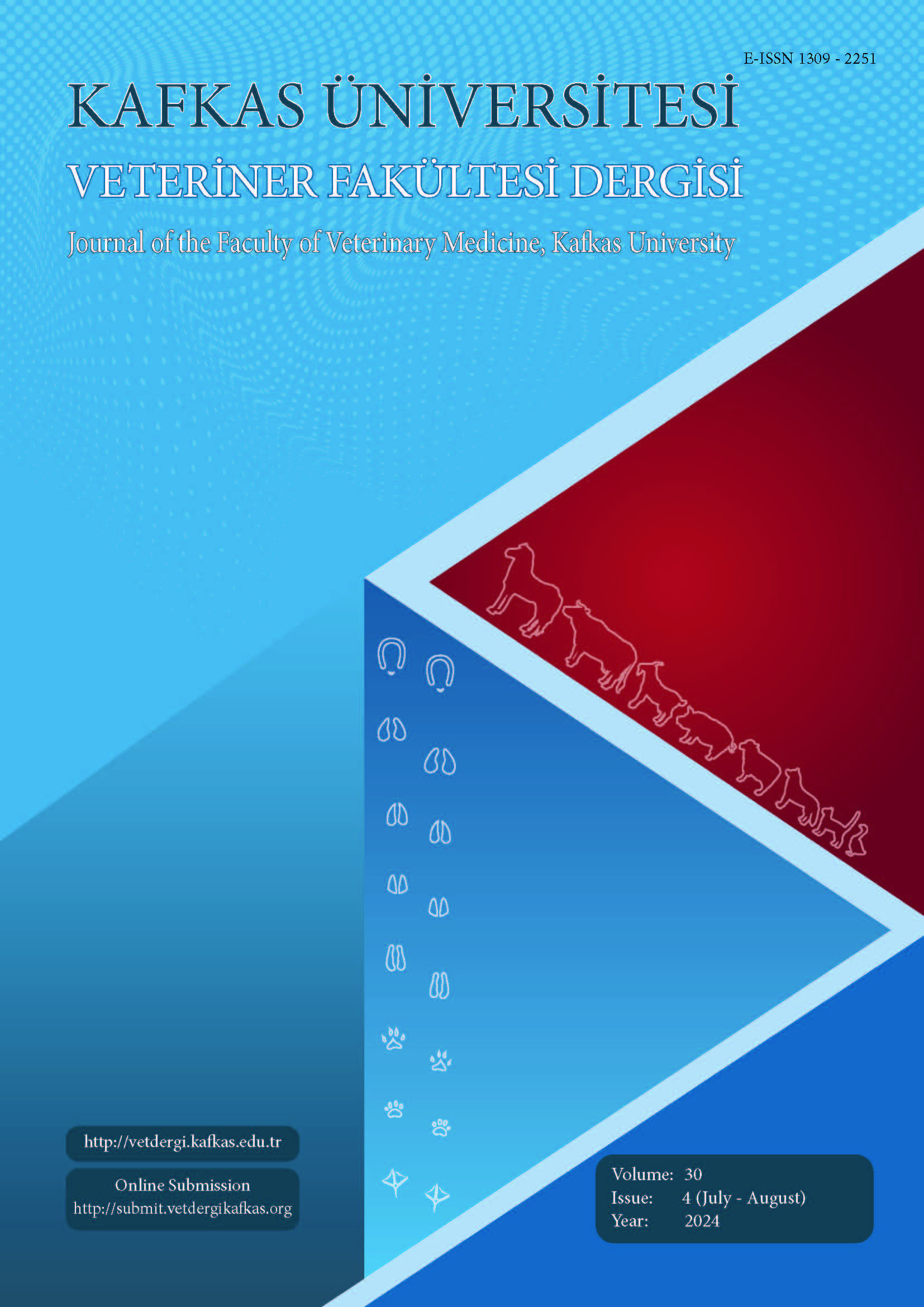
This journal is licensed under a Creative Commons Attribution-NonCommercial 4.0 International License
Kafkas Üniversitesi Veteriner Fakültesi Dergisi
2024 , Vol 30 , Issue 4
The Concentrations of Selective Endocrine Disruptors in Milk from Different Lactation Periods of Cows
1Cankiri Karatekin University, Eldivan Vocational School of Health Services, TR-18700 Cankiri - TURKIYE2Ankara University, Institute of Health Sciences, Department of Pharmacology and Toxicology, TR-06070 Ankara - TURKIYE
3Cankiri Karatekin University, Graduate School of Natural and Applied Sciences, Department of Biology, TR-18200 Cankiri - TURKIYE
4Ankara University, Faculty of Veterinary Medicine, Department of Pharmacology and Toxicology, TR-06070 Ankara - TURKIYE
5Ankara University, Faculty of Veterinary Medicine, Department of Food Hygiene and Technologies, TR-06070 Ankara - TURKIYE DOI : 10.9775/kvfd.2024.31820 Milk can be contaminated with organochlorine pesticides (OCPs), polychlorinated biphenyls (PCBs), polybrominated diphenyl ethers (PBDEs), and polycyclic aromatic hydrocarbons (PAHs), which are known as endocrine disruptors (EDCs). However, the relationship between the lactation period of cows and the residues of EDCs is unknown. The aim of this study was to determine the relationship between the lactation period in cows and EDCs residues such as OCPs, PCBs, PBDEs, and PAHs. Milk collected from cows during each lactation period was analyzed in terms of fat content and EDC residues. One or more contaminants were detected in almost all (98%) of the milk taken in three lactation periods. Three PCBs and 11 PAHs were found together in 1st lactation period, and one more PAH was added to them in other periods. However, the sample rate exceeded the maximum residue limit of 48%, 10%, and 16% in the first, second and third lactation periods, respectively. Also, it was seen that the riskiest period was the first lactation period, followed by the third and second periods. The same ranking is valid for the fat content in milk. Thus, it was concluded that the excretion of lipophilic EDCs in milk is related to the fat content in milk, and the higher the fat content in milk, the more lipophilic EDCs are excreted in milk. Keywords : Endocrine disruptor, Lactation period, Milking, Persistent organic pollutants, Polycyclic aromatic hydrocarbons, Risk assessment











